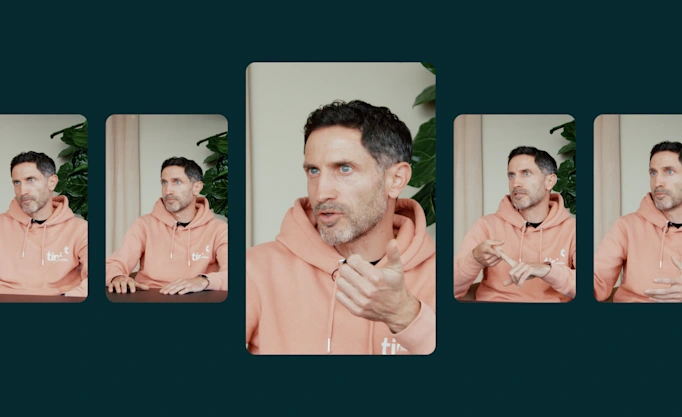Open banking use cases beyond financial services

Open banking is set to transform the commercial landscape by bridging the gap between banks and innovators. Learn how businesses across various industries can harness the power of financial data to boost efficiency and drive customer satisfaction.
Open banking brings benefits to all sorts of businesses – and isn’t limited to improving financial services.
Financial data can be used across every sector to promote speedier internal processes, more engaged customers and a healthier bottom line.
We go through how various industries – such as retailers, utility companies and telcos – can use open banking to their advantage.
When talking about open banking, you’d be forgiven for believing that only financial services benefit from the treasure trove of data held by banks. But that’s not the case. Industries ranging from retail to insurance can drive positive change in their business by taking advantage of the free flow of financial information.
Businesses of all sizes are now turning to open banking technology to increase revenue, drive down costs and build stronger relationships with digital-savvy consumers.
Open banking may not be the solution to every business problem, but reaping the rewards of the technology gives businesses the edge they need to stay ahead in an ever-evolving competitive market.
Data and open banking at a glance
Open banking works by letting third-party providers use consumers’ financial information from banks – always with the user’s consent – to create new products and services.
Although some companies (like Tink) have been offering open banking services for over a decade, the trend took off in 2018 when the EU’s Revised Payment Services Directive (PSD2) was transposed by most of its member states.
Seeking to make payments more secure, boost innovation and help banking services adapt to new technologies, PSD2 saw the banking sector thrust into the 21st century, ushering in a new era of collaboration and competition between fintech companies and incumbent banks.
A few years on, consumers now have an appetite for data-driven services made possible by open banking – and businesses of all kinds are starting to take note.
Big data use cases in financial services
Financial service providers (FSPs) experience the benefits of open banking in various processes:
Onboarding automation: open banking can simplify customer onboarding by fetching hard-to-access financial data and sparing customers the work.
KYC process: Know Your Customer (KYC) process automation streamlines due diligence procedures by using open banking to collect and verify customer information.
Transaction monitoring: open banking helps improve customer profiles, making it easier to identify anomalies and unusual activity that points to fraud.
Money management services: banks use open banking to aggregate financial information from different sources to make money management easier for consumers and businesses.
But, FSPs aren’t the only ones who stand to gain from open banking.
Beyond financial services: open banking uses in commercial settings
With data access more in reach than ever before, business leaders can leverage time-saving, value-adding open banking products to improve business operations and customer experiences.
Here are just some examples of open banking uses in the commercial sphere:
Retailers
With shoppers spoilt for choice, loyalty has never been so important in the retail arena. Open banking allows retailers to modernise their loyalty programmes to enhance customer capture and retention with rich data.
Using API integrations, retailers can offer a loyalty programmes without needing to issue cards, hand out stickers, or count stamps. With open banking, retailers can offer a fully automated loyalty programme that identifies the consumers’ transactions at its stores. It’s simple, more affordable, and creates a seamless customer experience.

Goloyal is using financial data to give retailers unique insights – and offer rewards to consumers.
Retailers can also leverage financial data to gain deeper insights into how and where customers are shopping to transform their marketing efforts with more targeted campaigns. For example, retailers can generate relevant point-of-sale offers and discounts based on consumer spending patterns using APIs embedded in their e-commerce website.
In a competitive market, retail leaders need to stay one step ahead of consumer trends – and open banking allows just that.
Utility companies
In the past, utility companies found it difficult to identify when customers have fallen into financial hardship. When a customer misses a payment, they risk incurring default payment charges, which can fuel the cycle of debt. At the same time, energy suppliers lose money and time when dealing with these cases.
Open banking can ensure energy suppliers take a proactive approach to failed payments. Customer account information helps utility companies identify and manage vulnerable customers, so they’ll know if a payment will fail before initiating it. Utility companies and customers (provided they opt into the process) can then work towards a solution, avoiding unnecessary late payment charges and reducing support time.
Insurance companies
Insurance companies can guarantee personalised customer experiences by taking advantage of the benefits afforded by open banking.
Insurers can use account data to provide tailored advice to customers about their financial situation or to help streamline the underwriting process.
On the other hand, access to deeper customer insights allows insurers to tailor offerings through targeted marketing or upselling for higher revenues and better customer engagement.

From a legal perspective, open banking allows insurance companies to manage and minimise risk by flagging fraudulent behaviour to ensure the firm complies with the stringent regulations governing the insurance sector.
Landlords and property management
Open banking has the potential to transform the tenant screening process by giving letting agents and landlords an accurate snapshot of potential tenants’ financial situation based on income and rental payment history (always with the tenant’s full consent).
Innovations in open banking bundles what can be a time-intensive process into a single digital transaction, meaning landlords can cut down on the amount of paperwork they need to keep track of, and tenants can skip the hassle of gathering the documents themselves.
Telcos
Telcos can improve creditworthiness checks using open banking, as transactional data paired with credit agency data provides a holistic view, giving companies a better understanding of the customer’s financial situation. With up-to-date information on customers’ spending habits, telcos can also offer tailored bundles thanks to more granular consumer profiles.
Open banking also drives more accurate calculations to improve – and even automate – the affordability checking process. Before lending, telcos can prevent financial exclusion and debt for consumers by accessing an accurate picture of consumers’ as they can verify income and outgoings in real-time.
A data-fuelled future is on the horizon
Open banking is the key to unlocking data-driven experiences for higher revenue and customer satisfaction. Armed with up-to-date financial information, business leaders across every sector can benefit from speedier internal processes, more engaged customers and a healthier bottom line.
Tink’s ready-to-go open banking products were created to help all sorts of businesses up their offering and deliver engaging customer experiences by easily tapping into high-quality financial data from banks across Europe.
Curious about what you could build with Tink? Check out our products.
More in Open banking

2025-11-20
3 min read
Tink powers the UK’s first cVRP transaction with Visa A2A
In partnership with Visa, Kroo Bank, and Utilita, we’ve just helped demonstrate the UK’s first commercial variable recurring payment (cVRP) using the Visa A2A solution – and it’s a big step forward for how people make regular payments.
Read more

2025-06-09
11 min read
The case for “Pay by Bank” as a global term
Thomas Gmelch argues that "Pay by Bank" should be adopted as a standard term for open banking-powered account-to-account payments to reduce confusion, build trust, and boost adoption across the industry.
Read more

2025-06-02
3 min read
Tink joins Visa A2A – what it means for Pay by Bank and VRP
Visa A2A brings an enhanced framework to Pay by Bank and variable recurring payments (VRP) in the UK, and Tink is excited to be one of the first members of this new solution.
Read more
Get started with Tink
Contact our team to learn more about what we can help you build – or create an account to get started right away.
